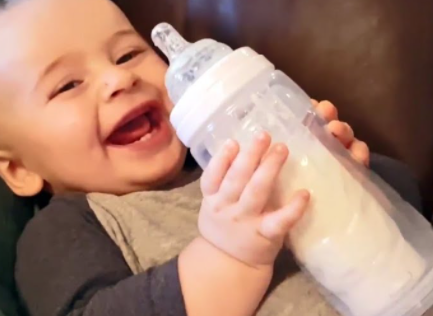 An additional step that can help destroy more germs than conventional cleaning is sterilization. It offers additional germ protection, but is not required for healthy infants who have access to safe sources of water and good immune systems. That said, the Centers for Disease Control and Prevention states that it is possible to sterilize feeding products at least once a day. There are some suggested ways to sterilize bottles, such as using boiling water, sterilizers for microwavable bottles, or electric steam sterilizers. One does not inherently overshadow the other. By using high temperatures and steam to kill germs, electric steamers plug into outlets and operate.
An additional step that can help destroy more germs than conventional cleaning is sterilization. It offers additional germ protection, but is not required for healthy infants who have access to safe sources of water and good immune systems. That said, the Centers for Disease Control and Prevention states that it is possible to sterilize feeding products at least once a day. There are some suggested ways to sterilize bottles, such as using boiling water, sterilizers for microwavable bottles, or electric steam sterilizers. One does not inherently overshadow the other. By using high temperatures and steam to kill germs, electric steamers plug into outlets and operate.Just like boiling water, sterilizing acts to kill bacteria by raising temperatures. Several different types of sterilizers, including microwave-friendly sterilizers, are available on the market. Following the instructions given by the manufacturer is the secret. Before you begin the steam or sterilization process, ensure that bottles, nipples and caps are thoroughly cleaned. By using hot steam to kill germs, microwave sterilizers kill bacteria. Water is poured and microwaved into the sterilizer for several minutes. Normally, this system takes less time than an electric steamer.
Remove Milk Buildup Regularly Wash Bottles
A periodic cycle in the dishwasher or scrub in the kitchen sink is sufficient enough on a day-to-day basis. In the dishwasher, to stop melting, make sure to place plastic products on the top rack. In special baskets on the top shelf, pacifiers, nipples, and other small pieces may be put so that they don't fall through to the bottom of the dishwasher.
Sterilize the spread of disease with bottles and binkies to curb
Sterilizing bottles and binkies after your child has been sick is a safe idea if you or other family members have been dealing with an infectious disease, or if your bottle or pacifier has been used by another child. Using your best judgement beyond that. Some reports suggest monthly sterilization, but the need is generally very low, assuming your water supply is clean. You will assess your own comfort level as a parent when it comes to cleaning and grooming habits.
The method is easy when it is time to sterilize: leave the bottles (including nipples) and pacifiers for five minutes in a pot of boiling water. Specially built bottle sterilizers that use steam to destroy germs and bacteria may also be purchased.








